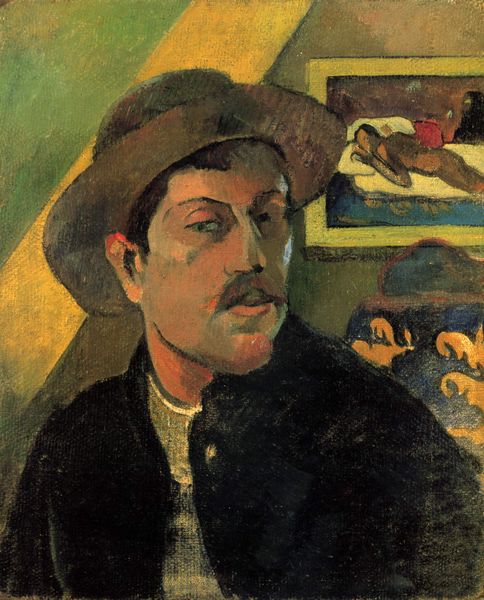Eugene Henri Paul Gauguin
(1848-1903)

Eugene Henri Paul Gauguin, a leading Post-Impressionist painter was born on June 7, 1848 in Paris, France. His father, Clovis Gauguin, was a journalist. In 1851 the family left Paris for Peru, because they disliked the political situation in France of the period. Clovis died on the voyage, leaving a three-year old Paul, his mother and his sister alone. They lived for four years in Lima, Peru with Paul's uncle and his family. The beauty of Peru greatly influenced Paul’s art. At the age of seven, Paul and his family returned to France, where they began to live with his grandfather. Gauguin soon learned French. At seventeen, Gauguin signed on as a pilot's assistant on board the merchant ship. Three years later, he joined the navy where he served for two years. In 1871, Gauguin returned to Paris where he worked as a stockbroker. In 1873, he married a Danish woman, Mette Sophie Gad. Gauguin had been interested in art since his childhood. In his free time, he began painting. Gauguin made friends with the artist Camille Pissarro, who introduced him to other artists. As he progressed in his art, Gauguin rented a studio, and exhibited paintings at the Impressionist exhibitions held in 1881 and 1882. During two summer vacations, he painted with Camille Pissarro and Paul Cйzanne. By 1884 Gauguin had moved with his family to Copenhagen. In 1885 he became a full-time artist and moved to Paris, leaving his family in Denmark. His wife and their five children returned to her family. Like his friend Vincent Van Gogh, with whom in 1888 he spent nine weeks painting in Arles, Paul Gauguin suffered from depression and once attempted a suicide. Under the influence of folk art and Japanese prints, Gauguin evolved towards Cloisonnism. In 1891, Gauguin sailed to the tropics to escape European civilization. Living in Tahiti, he painted "By the Sea", “Ave Maria” and other pictures depicting his life on the island. He moved to Punaauia in 1897, where he created the masterpiece painting "Where Do We Come From" and then lived the rest of his life on the Marquesas Islands, returning to France only once. During this period he also wrote the book “Before and after”, a fragmented collection of observations about life in Polynesia, memories from his life and comments on literature and paintings. In 1903, because of the problems with the church and the government, he was sentenced to three months in prison. He died of syphilis before he could start the prison sentence at the age of 54. His body had been weakened by alcohol. Gauguin died on May 8, 1903 and was buried in Calvary Cemetery, French Polynesia. The artist gained fame after his death, when in 1906 his 227 works were exhibited in Paris.

